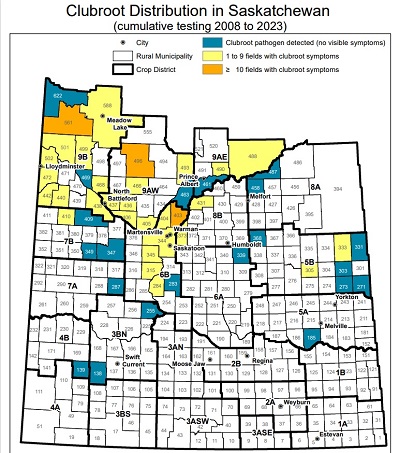
Clubroot spread slows in Saskatchewan due to dry conditions
The Saskatchewan government releases its clubroot distribution map each January to show the rural municipalities (RMs) where clubroot has been identified.
Clubroot is a soil-borne disease that can cause significant canola yield loss when pathogen levels are high.
SaskCanola chair Keith Fournier said over 500 fields were examined with producers’ permission.
“There was only one field picked up. The pathogen was detected through a soil test but no fields were picked up due to visible symptoms this year,” Fournier said.



